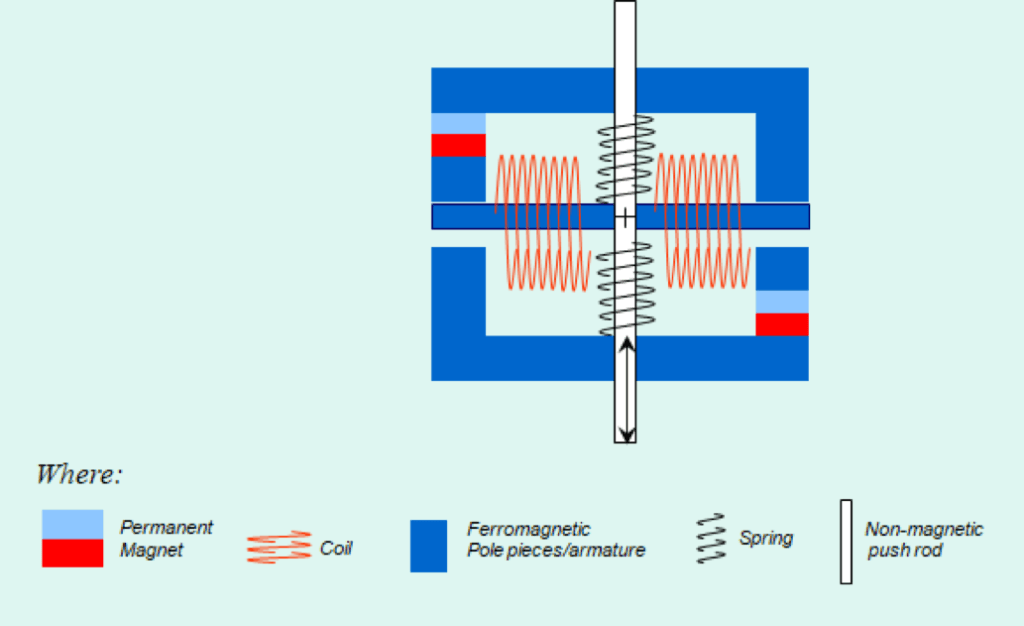By Wladyslaw Wygnanski
I have a great passion for science, with a particular interest in physics and engineering, understanding how mechanisms work with the primary aim of improving the effectiveness of a device. In the late 90s I was working with a high efficiency sound source, which directed me towards a pneumatic sound source option, but in order to achieve the necessary power conversion efficiency it required a very fast pneumatic ON/OFF valve able to generate a short air blast lasting less than 1 millisecond. With theoretical analysis and early experiment I found that the benefit of using this technology was that fast valve-based sound source efficiency could reach nearly 50% (theoretical limit), in comparison to generic loudspeaker efficiency, which is only ca. 3%.
The results of the experiment were published in Eureka Magazine in 1998, generating several inquiries, including one from the marine industry to create a powerful and energy efficient sound source for fog horns anchored out at sea, where there is limited electric energy. This was then further adapted to create a fast-pneumatic valve, modulating compressed air, acting as a powerful and energy efficient sound source for the aviation industry. This type of high efficiency sound source can be used to reduce jet engine noise, while also being energy efficient and enduring. This task was not without its challenges, as blocking and opening an orifice at this rate proved difficult. It was then obvious to me that a fast-acting valve can only be made when a recycled internal energy process is utilised. Each cycle begins with a rapid acceleration phase supported by a catapult effect, transitioning into a fast changeover and finally kinetic energy is reclaimed creating a soft landing in a stable position. This technique allows the valve to achieve a high-speed reaction, coupled with low energy consumption and longevity. Now, this technique is known as Binary Actuation Technology (BAT).
BAT provides an effective and efficient solution with significant proven benefits across a multitude of industries such as, extracting more oil from reservoirs and controlling flow in remote locations for oil and gas companies or reducing engine emissions or effective ABS for trucks in the automotive trade. I hope that the tremendous success of BAT will be repeated within the healthcare and life sciences industries with the aim of improving clinical, economic and patient outcomes.
How BAT works
Based on the fundamentals of physics, when developing the fast-pneumatic valve, it became apparent that delivering and wasting actuation energy, at a pulsation rate of 8,000 valve transitions per second, was not a practical solution; hence internal energy recycling was the only realistic concept solution. As an analogy, imagine an old grandfather clock, the pendulum goes from left to right and back again powered only by a short “tic” in which nearly all the kinetic energy is recycled. The “tic” is just a small amount of energy needed to cover energy losses caused by mechanical friction. This concept was fundamental in the creation of BAT.
The principle of BAT minimises energy wastage, as the mechanism requires only a short electric pulse to trigger each changeover process when the valve is switching between open and closed and back. The mechanism works by using an armature suspended in resilient components, which has two stable positions, secured by a permanent magnet-based locking mechanism that requires no electric power to maintain any stable position.
When the armature is approaching any stable position, the mechanism is able to absorb the kinetic energy of the armature and store it. The stored energy will be used to achieve “a kick start” when the next changeover action is triggered.
The energy recycling concept ensures substantial velocity reduction when the armature arrives to its destination (stable position) and this way the armature movement is smooth and without large mechanical stress. Smooth movement assures much longer life of the actuator due to substantially reduced mechanical stress and fatigue.
Although this unique patented technology was initially created many years ago, I still have that same excitement today and continue to look at ways of improving BAT’s proven capabilities by creating different configurations for other industries and markets.

The Binary Actuation Technology can take many forms. This illustration shows the structure of the pneumatic vibrator – one of many BAT based valve configurations in which a permanent magnet holds an armature (bent fixture) against a spring in one of two stable positions.
